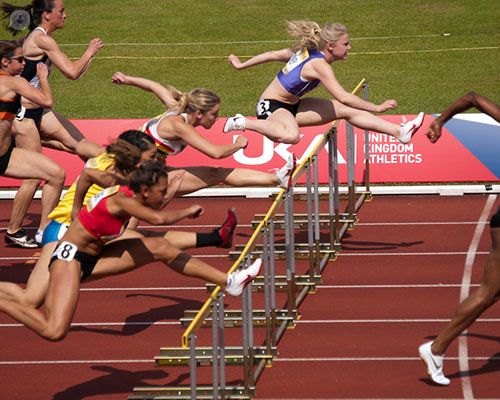Jumping over hurdles: proximal hamstring injuries
Escrito por:A hamstring injury can be frustrating for athletes and non-athletes alike, with rest and reduced mobility being necessary for recovery. Whilst there are different types of hamstring injury, Mr Sujith Konan, a leading orthopaedic surgeon, discusses what a proximal hamstring injury is and how they can be treated.

What is the proximal hamstring?
The hamstring is a group of muscles located in the back of your thigh. It is a strap muscle and spans between the hip and the knee joints. It is attached to bone in the hip (pelvis) and knee (tibia). The hamstring serves the unique function of straightening the hip and bending your knee. The main bulk of the muscle is in the back of your thigh, the cords from the muscle (tendons) then attach to the hip at the top end and the knee at the lower end. This is important because if the muscle is subject to sudden strong contraction, the chords (tendons) can pull off from the bones. Once pulled off, the muscle acts like an elastic band and does not reattach back on to the bone with the same tension.
Tears of the top end of the muscle at the level of the hip are referred to as proximal hamstring injuries.
What injuries can affect the proximal hamstring?
Proximal hamstring injuries commonly occur with sudden contraction of the muscle, often with the hip and knee joints pulling in opposite directions. As one would expect, it is common with sports and in particular with skiing, jet skis and the hurdle jump where the tendons can be subject to the sudden pull off from their attachment to bone. However, we commonly see it following all kinds of sports, falls and trauma.
Who gets proximal hamstring injuries?
Proximal hamstring tears can happen to anyone. They are often seen in public sports figures and fitness enthusiasts such as footballers, rugby players and athletes.
How do you know you have torn your proximal hamstring?
A torn proximal hamstring usually follows a bad sports trauma or fall. There may be numbness or electric shock-like symptoms at the time of the injury, as the nerve lies close by. Soon after the injury, there may be bruising at the back of the thigh from the bleeding from the torn muscle. Much later when the acute symptoms have settled, one may notice pain on sitting in the back of the thigh and weakness, especially when initiating walking or running. Weakness will commonly be felt for a number of weeks. The functional problems may be more apparent in those who engage in sports or an active lifestyle.
How long does a hamstring injury take to heal?
If left to heal on its own, there is often an attempt at scarring of the torn tendon and healing is not perfect but may be sufficient depending on your day to day activities. If repaired early, the tendon can be restored to the bone and healing is more predictable. Results of surgery are particularly good if undertaken early.
Most proximal hamstring injuries will respond well to non-surgical treatments, using the RICE method (rest, ice, compression and elevation) as well as physical therapy. Surgery will usually be recommended for more severe tears or if the tendon has completely come away from the bone. Surgery might also be suggested for younger patients or older patients who wish to remain active in their sports and exercise.
If you have suffered a hamstring injury and require further treatment, make an appointment with an expert.


